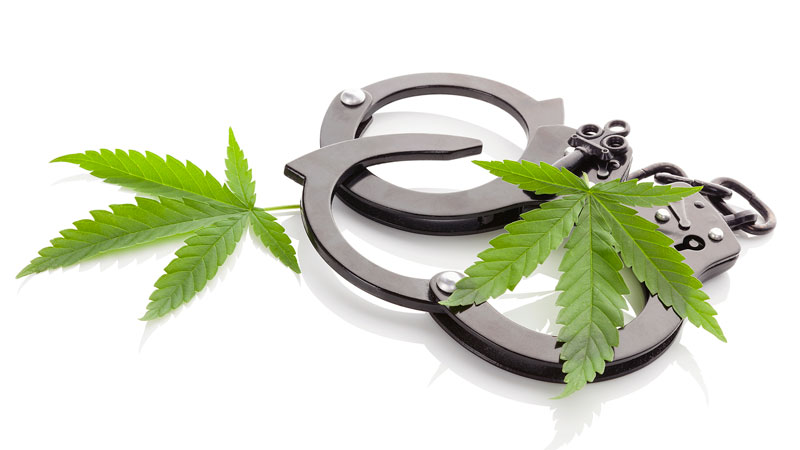Why the DEA Chooses to Control Cannabis in Schedule
Unlike the United States, most of the world has agreed that cannabis extracts, and CBD in particular, possess strong potential as therapeutic agents for a wide variety of diseases and disorders1. CBD remains one of the largest untapped therapeutic markets in the world. Its legal status over the past century has created a black hole in our scientific and medicalunderstanding. While the jury is still out on the exact efficacy of CBD, its use is catching fire in our collective imaginations.
While the federal government has not always had a specific definition for it, it maintains to have never ceased considering CBD a Schedule I drug. The DEAs rationale is that since it is not listed separately in the Code of Federal Regulations, it is considered a “derivative” or “component” of cannabis. Its scheduling was clarified under drug code 7350 of the Controlled Substances Act (CSA)2. Even though §7606 of the 2014 ‘Farm Bill’ classifies ‘Industrial Hemp’ as “all Cannabis plants with a THC content below 0.3%”3—essentially saying high-CBD cannabis strains are legal to cultivate—sub-section (a)(1) clearly restricts its use and cultivation to research purposes by an institute of higher education or state department of agriculture AND for products not intended for human consumption.
Now, even with H. R. 5485, the Hemp Farming Act of 2018, re-amending the CSA to exclude Industrial Hemp, previous precedent by the 9th Circuit stands: “if an extract of cannabinoids were produced using extracted resin from any part of the cannabis plant (including the parts excluded from the CSA definition of marijuana), such an extract would be included in the CSA definition of marijuana”4.
The DEAs logic, while not exactly sound, is very difficult to overturn. Basically, they argue that cannabis as a natural product has too many ingredients that have not been tested. So, to overturn their decision from the inside would essentially require clinical trials on each and every cannabinoid and terpene, and then on all of them together in combination. With the hurdles currently in place, it would realistically take dozens of decades to amass sufficient clinical evidence to overturn the decision.
A great analogy that helped me understand the ostensible reason why the DEA chooses to control cannabis in Schedule I was its comparison to opium. Although causing analgesia, smoking opium is a poor drug delivery vehicle, both in terms of dosing and potential health liability. Natural products also contain a multitude of compounds whose individual effects on human health have not been tested. Approved pharmacological and clinical studies of opium isolated and verified the efficacy and safety of the active pharmacophore, and now patients have access to oxycodone and morphine, which are administered orally or intravenously and are highly dose-controlled. The FDA approval of Epidiolex indicates the agencies (DEA, HHS) do not consider cannabinoids to lack medicinal benefits in and of themselves, but rather disprove of the delivery method of and unverified compounds in cannabis flower.
It is often difficult for researchers to gain access to the quantity, quality, and type of cannabis product necessary to address specific clinical research questions on the health effects of cannabis use. Many people are not aware that all the research-grade cannabis used in basic or clinical trial is grown at the University of Mississippi—nowhere else. Naturally, it is difficult for a single facility at the University of Mississippi to replicate the array and potency of products available in dispensaries across the country.In fiscal year 2015, studies supported by the National Institute on Drug Abuse (NIDA) accounted for 59.3% ($66,078,314) of all NIH spending on cannabinoid research; however, only 16.5% ($10,923,472) of NIDA’s spending on cannabinoid research supported studies investigating therapeutic properties of cannabinoids4. In other words, while the government sponsors cannabinoid research to some extent, the vast majority of funds are directed towards research investigating its abuse, and not its medicinal use.
In the end I believe it must be the people (via an Act of Congress) who decide to reschedule cannabis, and not an interagency process.There’s even precedence for Congress directly amending the Controlled Substance Act without asking the DEA6. Because of the strict clinical safety requirements that must be demonstrated for federal agency approval, while concurrently thesupply of cannabis meant for research purposes is deadly controlled and not at all reflective of the cannabis genotypes currently available in state markets, I do not believe that the FDAs approval of Epidiolex will lead (even indirectly) to the rescheduling of cannabis itself.
However, when you think about how much change is happening on the popular front, and that the largest voting bloc (seniors) are becoming more and more enamored with medical/recreational cannabis, I think it’s increasingly likely that the Booker/Sanders Marijuana Justice Act—or something like it—will finally tip the scale towards rescheduling and maybe even full-blown legalization.
References
- Cannabidiol (CBD) Pre-Review Report. Expert Committee on Drug Dependence. World Health Organization. Thirty Ninth Meeting, Agenda Item 5.2. November 6-10, 2017.
- Establishment of a New Drug Code for Marihuana Extract. 81 Fed. Reg. 90194.
- Legitimacy of Industrial Hemp Research. 7 USC 5940.
- (9th Cir. 2004) (Hemp II).
- The Health Effects of Cannabis and Cannabinoids: The Current State of Evidence and Recommendations for Research. Washington (DC): National Academies Press (US); 2017 Jan 12. 15, Challenges and Barriers in Conducting Cannabis Research.
- Addition of Gamma-Hydroxybutyric Acid to Schedule I. 21 CFR Parts 1301 and 1308.










